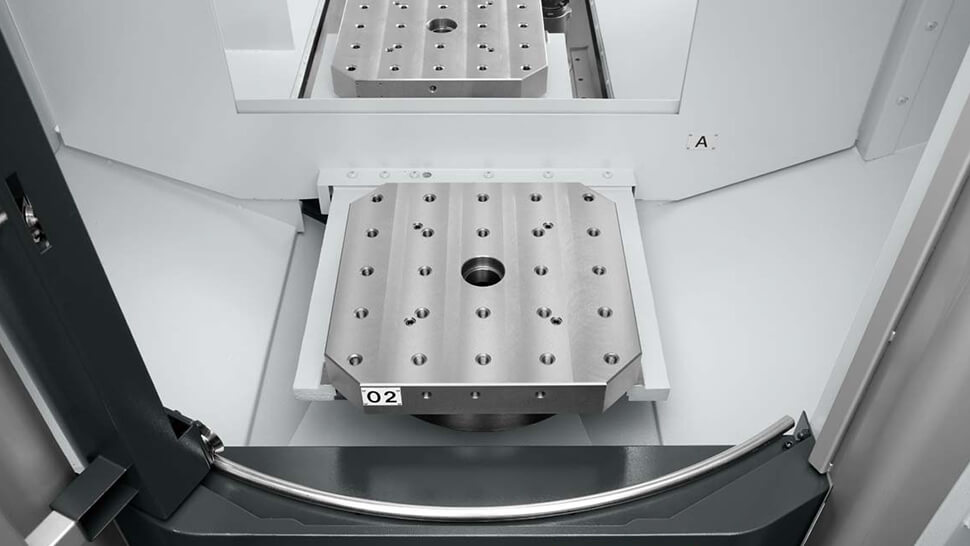
Interview
Great Demand for Automation
The manufacturing in the new production site in Davis, US-State of California, is focused on two horizontal machining centres (HMC) of the type NHX and one vertical machining center, in cooperation with the adjacent Digital Technology Laboratory (DTL), a highly modern and global competence center. Dr. Eng. Masahiko Mori, CEO Mori Seiki Co. Ltd., spoke with Georg Dlugosch, chief editor of CNC-Arena´s emagazine.
How does Mori Seiki view the customers‘ requirements and needs?
Mori: DTL has mechanical and software engineers and can handle custom design orders from the US market. MSM is able to respond to a wide range of customers’ demand because it has not only a factory but has a R&D center.
Which target group do you want to reach primarily with the new machines such as Milltap and NHX?
Mori: Basically, we decide production machines depending on the market demand. We’ve decided to produce horizontal machining centers in the U.S.A. because HMCs are in great demand in the country and there are many custom design requests.
Are energy and resource efficiency also increasingly important and decisive arguments for your target group and end users, when they are considering the purchase of these machines?
Mori: The U.S.A. is a very big market for Mori Seiki. We think manufacturing machine tools closer to the customers is advantageous to both customers and Mori Seiki in delivery times and logistics costs. Of course, it is effective in hedging foreign exchange risks.

Source: MORI SEIKI Co. Ltd



Is DMG also involved in the development at the DTL, and will DMG-machines be produced in Davis one day, too?
Mori: Mori Seiki and DMG are collaborating more and more every day. DTL is a big part of this collaboration. We will demonstrate some key projects at EMO such as Messenger and LPS that are developed for both the DMG and Mori lineups. A very important topic for both companies is shop floor communication and automation, so we are actively working together to realize industry leading technologies. Additionally, other expertise such as Virtual Modeling and Analysis developed at DTL are being utilized now for DMG new machine development.
Regarding the production of DMG machines, Davis will produce machines that make sense logistically and by market demand. Therefore, it is entirely feasible that DMG machines may also be produced at Davis in the near future.
The automotive industry is an important recipient for the machinery manufactured in Davis: How do you assess the situation of this sector in the United States?
Mori: The automotive industry in the U.S. is very active, so we’ve got a lot of inquiries. And also there is a great demand for automation.
Because the automotive market is very high production and seeing significant customization on machinery intended for this market (especially Horizontals which is the main product of Davis), having engineering teams in Davis that can directly handle the customer optional specifications, communication, and automation requirements allows DMG/Mori Seiki, Davis, to serve the automotive market in the United States very well.
The new production site is highly automated. How much does this influence the development of the next generation of machines in connection with the DTL – will they be developed and placed on the market much faster?
Mori: Automating the production site allows higher quality and consistency in our products as well as giving staff more time to improve processes and designs (as opposed to loading/unloading machines). The main influence on the development side is that designs need to be optimized to use the automated manufacturing process. Since our number one goal is quality, development of new designs must continue to follow a systematic process with ample testing and verification before we put it on the market. Therefore, the two are not directly related.
The new MAPPS control, designed customer-specific, combines the hardware with a user-friendly software. How will the user benefit from the close connection between hardware and control, and will this have an “iPhone-effect” for a simplified control?
Mori: There will be a learning curve, but we feel user interface evolution must keep up with today’s modern environment. It will facilitate training new people into the industry and have a more natural connection to the machines when compared to humans normal interactions with their everyday devices such as iPhone. The concept is to put very advanced control functionality in an intuitive layout which allows very easy control while pushing the limits of operability. Also, more and more sensors and data are being integrated into the machinery which allows for a more immersive effect between hardware and operator.
Will MAPPS also be used in the DMG-machines in future?
Mori: DMG and Mori Seiki are collaborating more and more in these areas. Please attend EMO to get the full details on the control platforms intended for DMG/Mori Seiki. It is a very exciting development.
Contact
Dr. Eng. Masahiko Mori
CEO
MORI SEIKI Co. Ltd.
Irene Bader
Global Marketing Department
General Manager
Mori Seiki GmbH
Munich, Germany
Phone +49 89 35744 168
Send e-mail
www.moriseiki.eu
